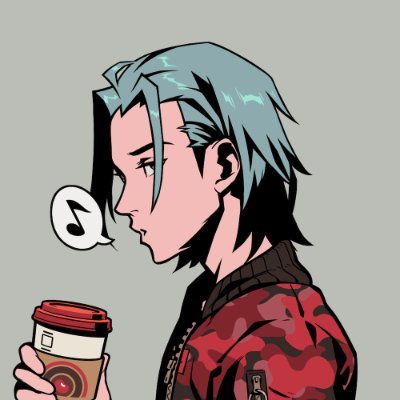Last night on my way home from work, I saw the owner of a street food stall coaxing his child to do homework while frying skewers and explaining math problems. It suddenly struck a chord with me.
Adult life is always like this, busy making a living while pretending everything is easy.
I think that whether it's creating content, investing, or living, it's essentially about finding order under limited conditions.
At this point, I also want to talk about a project I've been researching recently — @KAIO_xyz
1/
In the past two months, KAIO has been very active:
First, Libre Capital officially changed its name to KAIO and announced the launch of a $100 million Bitcoin yield fund;
Then, several institutional funds (including BlackRock's dollar money market fund and Laser Digital's Carry Fund) were put on-chain via Hedera;
The latest news is that BlackRock and Brevan Howard's funds are also going live on the Sei network through KAIO's infrastructure.
This is not a small-scale experiment, but a real implementation of institutional assets on-chain.
2/
I feel that @KAIO_xyz's approach is different from traditional RWA projects.
Others are "moving assets on-chain," while KAIO is "moving processes on-chain."
They are not just issuing a token, but turning the processes of subscription, redemption, compliance, and auditing into verifiable on-chain processes.
This means RWA is not just a certificate, but an asset module that can be programmed, combined, and called in DeFi.
This is "composable institutional assets."
3/
Why use Hedera and Sei?
Hedera provides a compliant and high-throughput environment suitable for institutional funds;
Sei focuses on matching performance and multi-chain scalability.
This indicates that KAIO aims for a multi-network layout rather than betting on a single chain.
In the future, asset on-chain will definitely be a multi-chain ecosystem, and distributed issuance and circulation will truly attract global capital.
4/
Looking at the resources behind it.
KAIO is backed by traditional financial forces like Laser Digital (under Nomura).
This means its direction is naturally inclined towards compliance and being institution-friendly.
This is completely different from the pure DeFi team's model of "technology first, compliance later."
It can be said that KAIO is an RWA infrastructure that has grown from traditional finance, not an on-chain laboratory.
5/
I believe that the key to RWA's success lies in the "compliance automation."
Whoever can first put KYC, AML, auditing, and reporting modules on-chain and open them as composable interfaces will be able to create a true network effect.
KAIO is doing this: putting the key nodes of the fund lifecycle on-chain.
This is much harder than "issuing a token" and has a higher barrier.
6/
Another trend is the types of assets.
Currently, the main assets on-chain are money market funds and neutral strategy funds, which have relatively low risk.
This is not conservatism, but reality.
Institutional funds will first enter the chain with the safest and most quantifiable assets, and then gradually expand.
This aligns with the logic of funds — first seek stability, then speed.
7/
I also noticed a long-term impact:
When these regulated asset shares can be accepted as collateral by DeFi protocols, enter lending and market-making, the entire crypto yield structure will be reshaped.
In the future, "risk-free returns" may really exist on-chain,
Liquidity pools will also mix traditional cash flows and crypto asset volatility returns, forming new yield curves.
8/
Of course, this path is not without risks.
Compliance differences, cross-chain security, information asymmetry, and liquidity mismatches are all potential flashpoints.
But I think this is exactly why KAIO is worth paying attention to:
They are cutting into the most difficult areas and aiming to solve structural problems.
This difficulty precisely indicates that what they want to do is "underlying infrastructure," not a quick-money project.
9/
If you are a content creator or researcher, now is a good time to get involved in the RWA track.
You can analyze the compliance mechanisms of fund on-chain, assess the security logic of cross-chain infrastructure, or create visualized process content.
I have observed in the Yaps ecosystem that original, insightful analytical content often scores high.
The key is to write about "mechanisms and logic," rather than just rehashing news.
10/
From Libre to KAIO, from experimental DeFi to institutional-level composable assets, this is a turning point of an era.
I believe that the future capital market will not just be about on-chain "tokenized assets," but on-chain "compliance and trust mechanisms."
Whoever can first turn this system into standard modules will become the operating system of the new generation of financial infrastructure.
#KAIO #RWA #DeFi #Hedera #Sei
Show original
26.61K
109
The content on this page is provided by third parties. Unless otherwise stated, OKX is not the author of the cited article(s) and does not claim any copyright in the materials. The content is provided for informational purposes only and does not represent the views of OKX. It is not intended to be an endorsement of any kind and should not be considered investment advice or a solicitation to buy or sell digital assets. To the extent generative AI is utilized to provide summaries or other information, such AI generated content may be inaccurate or inconsistent. Please read the linked article for more details and information. OKX is not responsible for content hosted on third party sites. Digital asset holdings, including stablecoins and NFTs, involve a high degree of risk and can fluctuate greatly. You should carefully consider whether trading or holding digital assets is suitable for you in light of your financial condition.

